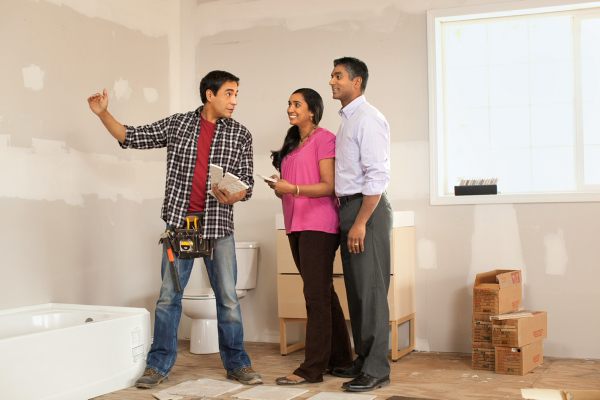
Built For You
By Ashley Settle Podesta, Regional Builder Sales Manager,
Wells Fargo Home Lending
When it comes to buying a home, most buyers have a vision for what they want — a picture in their mind of a place to spend evenings after a long day, cook meals and gather with family and friends. Considering the unprecedented amount of time we have spent in our living spaces during the first half of 2020, you might have completely redrawn the picture more than once these last 90 days.
Sometimes, finding that perfect home to match the picture means looking to new construction.
If that is the path for you, it’s important to know that you will follow a number of the same steps that you would if you were financing an existing home; however, there are important differences to keep in mind. Here’s what to consider as you head down this homebuying journey:
Understand where you are on the path to homeownership. Check out the steps I’ve previously shared!
Get pre-approved. A preapproval is always a good idea because it shows builders that you are ready to buy. The preapproval tells your builder that your lender has done a preliminary check of your credit and financial information and provided preapproval of the amount you may be able to borrow. The process can be easy. In fact, many companies offer an online mortgage application that prefills contact and financial information for existing customers.
Determine your new construction path. Work with your builder to find your path and understand the financing associated with it:
- Move-in-ready homes by a builder are often referred to as spec homes. Buying a spec home is typically like purchasing an existing home. Your lender will work with you to complete the mortgage loan using the lending product that best fits your financial situation and work with you to set the close date.
- If you’re working with a builder who offers a specific set of floorplan designs to choose from, financing is typically similar to financing a spec home with one important difference — the timeline. The timeline for completing your house and closing the loan is determined based on numerous factors, including average build time, geography, and time of year. With several moving pieces, make sure your lender and builder are in communication about the expected close date.
- If you are going with a custom home — where you acquire the lot upfront and participate in the home design and make all the decisions — you typically will need a construction loan to finance the build. The construction loan will provide funds to acquire your lot and finance the construction of the home. Once the build is drawing to a close, you would work with a lender like Wells Fargo to pay off the construction loan and take out a mortgage. This type of build also requires careful coordination between your builder and your lenders, as the lender you use for your final mortgage may not be the same as the one you use for the construction loan.
- Ensure your budget has room for extra expenses. If you’re not buying a spec home, additional costs could arise as your house is built. You may decide that you can’t live with the vinyl flooring that is standard and need to upgrade to hardwood floors. Put some extra room in your budget but then take care to avoid too many unplanned upgrades as that could impact the amount you need to finance in your final loan.
Be mindful of the mortgage process. Regardless of the house you buy, it is always important to understand the factors that could impact your loan and to work with a lender who will guide you through the lending process.
- Life events can impact your loan approval, such as changing jobs or taking on additional credit, like a new car loan. Have open communication with your home mortgage consultant about any significant financial changes.
- Be sure that your lender can lock your rate on your home loan while your home is being built. Interest rates can rise and fall unpredictably, so you’ll want to work with a lender who offers an extended rate lock for up to 24 months during your build.
Building a home is a fun and exciting project that often allows you to pick the floor plan, finishes and amenities that work for you and your loved ones. Take care to understand the lending considerations as well, so you can pick the lender and lending program that works best for you, too.